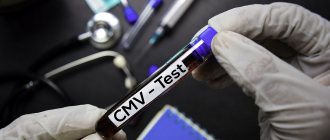Types of infection
Today, experts have identified several main mechanisms of pathogen transmission from person to person, some of which are well known to ordinary people, while others have no idea about them.
In a simplified scheme, it is believed that diseases are transmitted by airborne droplets, contact, blood and the fecal-oral route. In fact, the spectrum is a little wider and more diverse. Experts offer 6 options for transmission of infection:
- aerogenic;
- contact;
- transmissible;
- fecal-oral;
- vertical;
- blood-contact.
However, some of them are divided into groups.
Article on the topic
Pollen or infection? Diseases that are often mistaken for allergies
Virus life cycle
One of the characteristics of viruses is the absence of cell division.
The propagation of these malicious agents occurs in several stages:
- Attachment to a living cell.
- Penetration into the cell.
- Loss of membranes within the host cell.
- Replication (reproduction of the structure) of the virus.
- Exit from the cell (depending on the type of virus, the affected cell changes its structure or dies).
The described processes occur at the microscopic level, so they cannot be controlled. Suspicion of a viral infection arises when appropriate symptoms appear.
Aerogenic option
This option is precisely the well-known airborne route. By the way, there is also such a variety as the airborne dust method of spreading infection. In fact, the aerogenic mechanism of transmission of infection from person to person is based on the fact that pathogenic microorganisms accumulate to a greater extent in the respiratory tract. They are transported to another organism through the air. With airborne transmission, viral particles or bacteria are released into the environment when coughing or sneezing or talking too much, when a person literally sprays saliva. Infection occurs when another person inhales these airborne particles in the form of an aerosol. Most often this happens during close contact.
The airborne dust variant of infection occurs when dust particles with a viral pathogen or bacteria enter the human body (this is relevant if the pathogenic microorganism has the ability to survive in the external environment for a long time). Therefore, after walking with animals on the street, you should thoroughly wash their paws so that they do not spread infection and bacteria throughout the house. The warning about the need to take off your shoes when entering the house is based on the same principle; you cannot wander around the rooms in them, so as not to drag away potential pests.
General signs of infectious diseases
Infectious diseases have a similar pattern of onset of the first symptoms. When infected with a pathogen, general intoxication occurs in the body as a response to changes. Typical manifestations include: fever, chills, feeling tired and unwell, muscle weakness, headache, nausea, sleep cycle disturbances, loss of appetite.
With some infections, a rash may appear on the skin. Sometimes it has a specific character and this makes the diagnosis easier. A characteristic sign of a respiratory infection is coughing and sneezing, sore or sore throat, and hoarseness. If you have these symptoms, it is important to use personal protective equipment to avoid spreading the infection to others. Stomach upset is common.
Contact option
The contact variant is when the infection is transmitted through direct contact. Pathogens, also known as pathogenic microorganisms, can live on mucous membranes, skin, on the surfaces of wounds, etc. They can move upon contact on various surfaces, and then be transmitted to another person, for example, in the presence of microtraumas on the skin. There are two options for transmission of infection - direct (for example, through handshakes, hugs, etc.) and indirect (mediated; in this case, infection occurs through objects - household appliances, furniture, toys, etc.). If there is a suspicion of certain pathologies in one of the family members, it is necessary to very carefully monitor the cleaning schedule in the house - wipe and disinfect surfaces more often, and carry out daily wet cleaning of the floor.
A year is not a period. How long did the worst epidemics in history last? More details
Sexual tract
Syphilis infection occurs through any unprotected sexual contact with a sick person.
The risk of infection is very high. The causative agents of syphilis multiply in all liquid substances of the body, including in semen in men and in vaginal secretions in women. Therefore, venereologists never tire of warning that even with one single sexual contact with a person with syphilis, the risk of infecting his partner is at least 45%. Moreover, this does not depend either on the stage of development of syphilis in the patient, or on the characteristics of its course, since syphilis is extremely contagious at any stage, including latent.
Often, syphilis is transmitted not only through “traditional” sexual intercourse, but also through oral or anal contact, and the risk of infection in this case is no less, and sometimes even greater. This is due to the fact that during oral contact, partners are less likely than during genital contact to think about the need for protection.
Venereologists, on the contrary, believe that during oral contact, the use of barrier contraception, for example, a condom, is absolutely necessary, especially if the partner is new.
As for anal contacts, their danger is also obvious. Cracks in the rectum occur more often than in the vaginal mucosa. It is no coincidence that the proportion of homosexual men among patients with syphilis reaches almost 60% of the total number of infected.
Transmission option
This type of transmission of infection raises many questions among the population, because this term hides the transmission of pathogenic microorganisms with the help of insects. Diseases can be carried by flies, lice, bedbugs, fleas, and mosquitoes. Among the pathologies that insects can give a person are sleeping sickness, plague, malaria, typhus, dysentery, diphtheria, polio, anthrax, etc.
Here it is worth understanding that insects themselves are not pathogens - they only serve as an incubator for microorganisms that lead to such pathological conditions, and carry them on themselves.
Symptoms
Viral diseases are accompanied by:
- General malaise (weakness, lethargy, loss of strength).
- Increased body temperature.
- Sneezing, coughing, rhinitis.
- Respiratory dysfunction.
- Enlarged lymph nodes.
- Gastrointestinal disorders (nausea, loss of appetite, diarrhea, vomiting).
- Deterioration of the skin condition (primarily rash).
- Discomfort, painful sensations in various parts of the body.
With the active spread of dangerous viruses throughout the body and the absence of effective treatment procedures, the functioning of many organs and systems is disrupted, which leads to catastrophic consequences.
The degree of risk of complications from viral infection largely depends on the timeliness of contacting medical specialists and the thoroughness of following their recommendations.
Fecal-oral transfer
A common method of transmission of infection. In essence, this is a pathogen transmission mechanism when a pathogenic microorganism is localized in the gastrointestinal tract. It can come to the surface either with feces or with vomit. At the same time, it lasts for a long time. Infection occurs mainly through dirty hands (this means even invisible skin contamination, for example after playing in the ground or with animals) or contaminated water or food.
You can become infected in this way through contact with objects touched by the patient - linen, food, dishes, etc., as well as through unprocessed foods - unboiled milk, raw meat, unwashed vegetables, etc.
Article on the topic
Wait for the second wave and keep your head down. When will there be a cure for COVID-19?
Household way
It is less common, but it is not at all excluded in families where one partner has syphilis, and the second does not know about it or does not attach due importance to it. Syphilis is transmitted from one partner to another through saliva during a kiss, through any shared object (spoon, cup, toothbrush, lipstick, cigarette, etc.) on which there is dry discharge containing pale treponema.
Syphilis that arises in this way is called household syphilis. It is quite rare, since pale spirochetes outside the body do not live long. In order to avoid infection with household syphilis, you just need to follow basic hygiene standards, for example, not use one toothbrush and thoroughly wash dishes with hot water after use.
Hemocontact variant
As the name suggests, this is a variant in which the infection is transmitted through blood. This method can be vertical, i.e. from mother to fetus, sexual, indirect - through contact with infected blood. In addition, there is also an artificial variant of infection, which is possible, for example, during medical procedures or during tattooing.
In most cases, simple hygiene will help protect you - regularly washing your hands with regular soap and avoiding the habit of touching your face and eyes with your hands. You should also handle food carefully and try not to eat unwashed or unprocessed foods.
Hematotransfusion route (through blood)
The blood transfusion route of infection with syphilis is relevant when transfusing the blood of a sick person to another person (unfortunately, such cases do occur, although this is most likely an exception to the rule - the donor must certainly be tested for sexually transmitted diseases).
Infection through blood is more likely when using a single injection syringe. That is why drug addicts, like homosexuals, are at particular risk of contracting syphilis.
Complications
The most common complications of listeriosis are:
- endocarditis in the septic-granulomatous form of the disease;
- congenital malformations in children of sick women, stillbirth, premature birth.
- death of newborns with the progression of respiratory and cardiovascular failure, as well as with the development of purulent meningitis;
- pneumonia and purulent pleurisy in infants;
- hepatitis;
- consequences of damage to the central nervous system (mental retardation, paralysis, epilepsy, convulsions) after treatment.
The specific treatment for listeriosis is therapy with antibacterial drugs.
Air danger
It turns out that the division into droplet and air-dust transmission proposed by Wells, although still used, is outdated.
At the same time, theoretical data on the transmission of coronavirus through airborne dust are also accumulating. Laboratory studies under idealized conditions show that the virus in aerosol form can live for up to 16 hours (in these experiments, scientists create aerosols artificially using special devices). And “during normal speech, a suspension of droplets is released, which remains in the air for tens of minutes and has an exceptionally high potential for transmitting the disease in confined spaces.”
How important is it? The WHO says that while some studies have found viral RNA in the air of hospital rooms, “no studies isolated viable virus from air samples.”
This means that the virus found either was not capable of infecting, or was present in too small quantities to cause disease. Indeed, results from laboratory studies cannot be reliably generalized to real-world conditions in which the virus spreads and infects people. And just because the virus travels far in droplets does not mean that it can infect people over long distances.
What is needed for diagnosis?
Diagnostic measures for listeriosis are highly dependent on the system or organ that is affected by the disease.
Most often, diagnosing listeriosis is quite difficult. This pathology is very similar to tonsillitis, mononucleosis and other infectious diseases. A general analysis of urine and blood shows an increased number of monocytes (especially characteristic of the anginal-septic form of the disease), indicating the presence of an inflammatory process, but such information is too little for diagnosis. Therefore, mucus is collected from the nasopharynx, pharynx, conjunctiva, and in some cases, puncture of the lymph nodes, examination of amniotic fluid, and cerebrospinal fluid.
It is imperative to sow the material on a nutrient medium. This will make it possible to determine not only the nature of the infectious agent, but also to determine its sensitivity to antibiotics.
It is also worth establishing the severity of symptoms of listeriosis. For example, in case of hallucinations, paralysis, convulsions, consultation with a psychiatrist and neurologist is required, and in case of damage to the visual organs, an ophthalmologist is required.
Varicella zoster infection
Varicella-zoster virus causes chickenpox and herpes zoster. The source of infection for chickenpox can only be a person with chickenpox or herpes zoster, including the last 24-48 hours of the incubation period. Convalescent chickenpox remains infectious for 3-5 days after the skin rash stops. The disease cannot be transmitted through a third party. Intrauterine infection with chickenpox is possible in the case of a pregnant woman. Chickenpox can occur at any age, but in modern conditions the maximum number of patients occurs in children aged 2 to 7 years. Herpes zoster develops after primary infection with the Varicella-zoster virus, after the infection passes into a latent form, in which the virus is localized in the spinal, trigeminal, sacral and other nerve ganglia. Endogenous reactivation of the infection is possible.
Clinical picture of listeriosis
The incubation period (the time from the moment of infection to the first clinical manifestations of the infectious disease) for listeriosis ranges from 3 to 45 days.
Listeriosis does not have any specific symptoms that distinguish it from other infectious diseases, and its clinical picture often resembles a common viral and bacterial infection. Even the severe course of the disease does not produce any special symptoms that make it possible to clinically differentiate listeriosis from bacterial sepsis or serous meningitis.
Symptoms of acute form of listeriosis
The disease begins suddenly, the body temperature rises sharply, the duration of which is from 3 days to 2 weeks, the patient develops a severe headache, muscle and joint pain, and loss of appetite. A large-spotted rash may appear on the skin, which thickens in the joint area; on the face, sometimes the rash has the appearance of a “butterfly”. Often in the acute period, symptoms of acute gastroenteritis, nephritis, endocarditis appear, and the spleen and liver become enlarged. The acute form of listeriosis has a course duration of 1 to 3 months.
Prevention
There are many risk factors.
To minimize them, you need to follow some recommendations:
- Before eating, rinse raw berries and vegetables thoroughly under warm water. Even if a person has cleaned the product, it should also be washed.
- It is necessary to ensure the cleanliness of the kitchen surface. Also, cutting boards for meat and fruit should be separate.
- Listeria has the ability to survive in the refrigerator. For this reason, it is necessary to monitor the temperature in the freezer; it should not be higher than 0 degrees.
- It is recommended to regularly clean the refrigerator of food residues and liquids that have been spilled from fish or poultry.
- Meat and fish must be cooked until fully cooked. Try to remove semi-finished products from the menu. If you still have to, you should reheat them for food at the temperature indicated on the package.
- Opened canned goods and slices should be stored for no more than 3 days.
- It is recommended to consume soft cheeses with caution.
It should be remembered that food products, when properly processed and prepared, are not hazardous to health.








